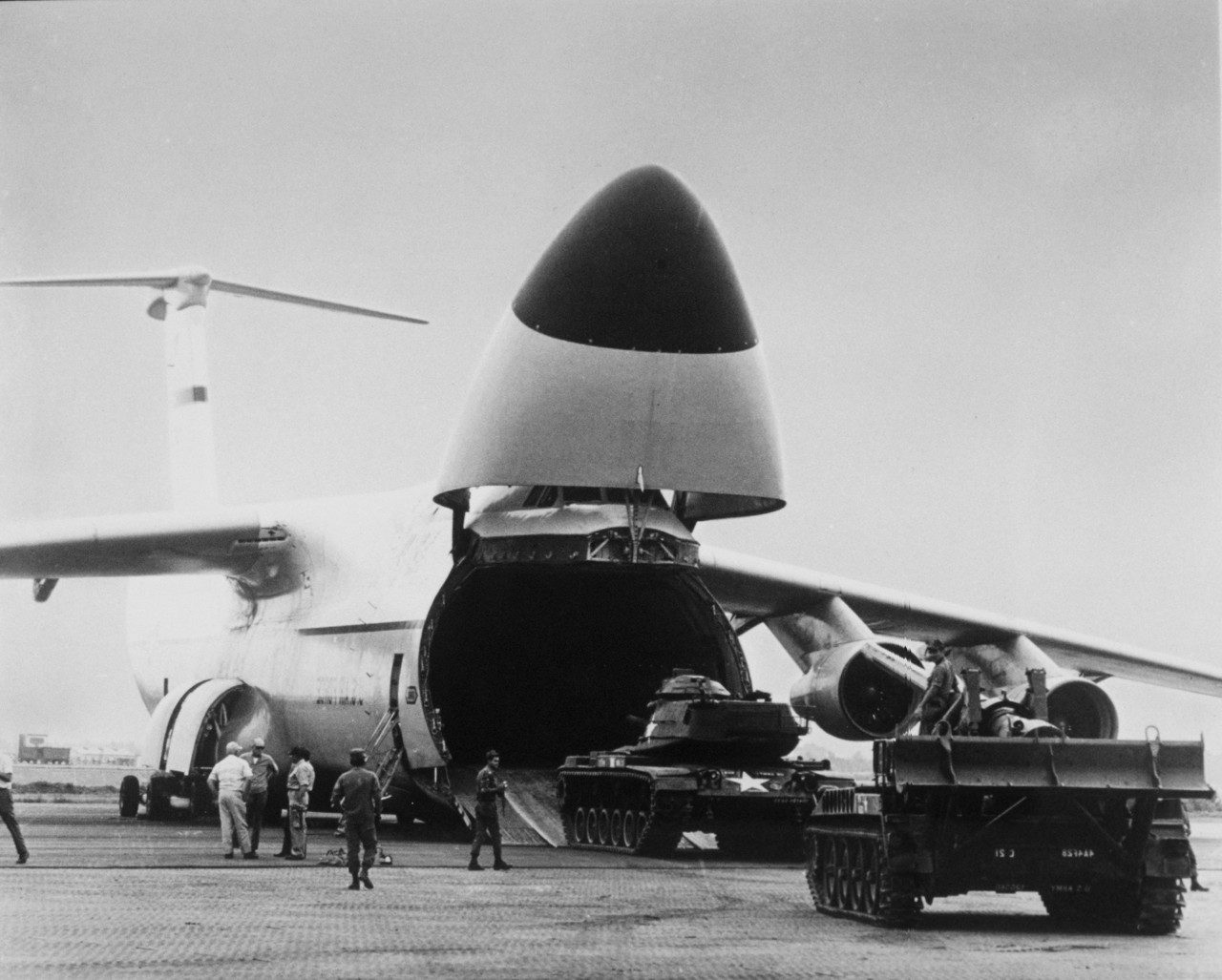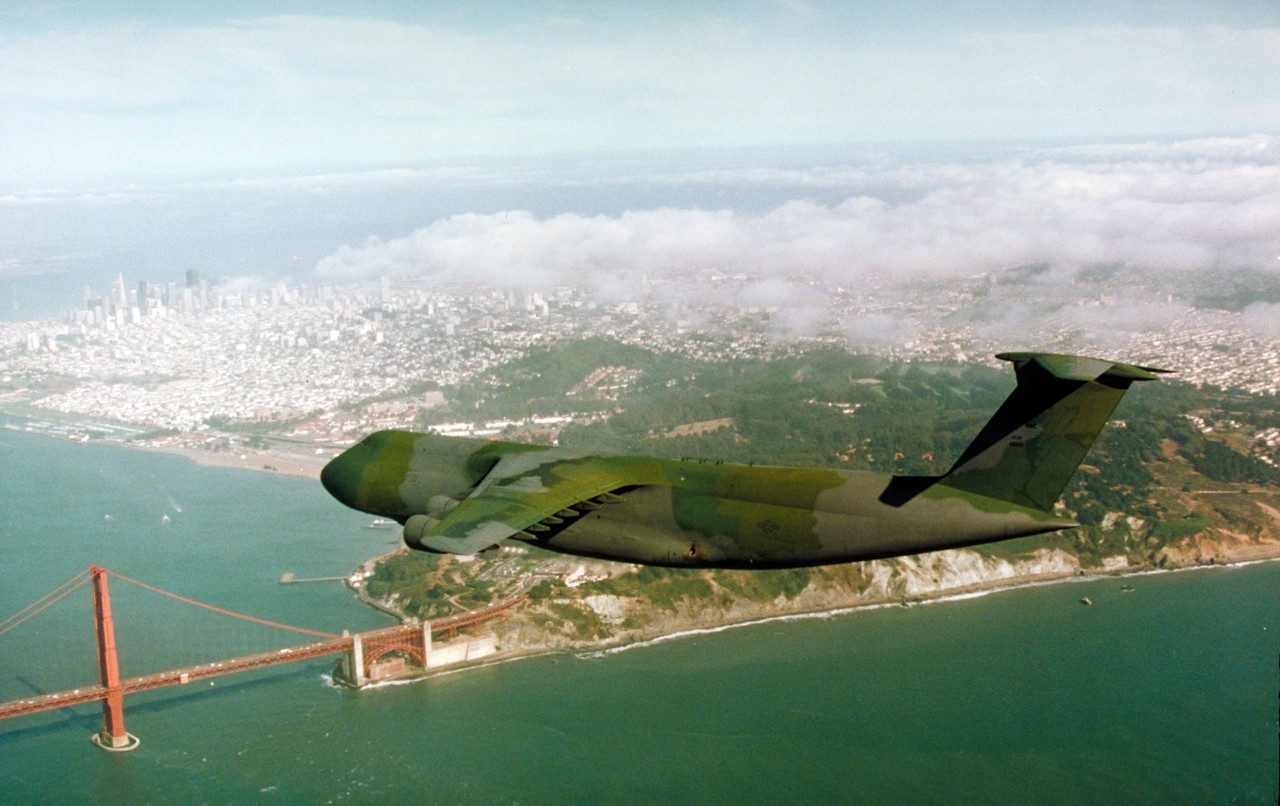C-5 Galaxy: Heavy Lifting
April 07, 2016
The Vietnam War underscored the urgency of developing the capability to move U.S. troops and weapons quickly overseas. The need? A huge military transport that could carry nearly every type of combat equipment—including heavy tanks and helicopters—any place in the world. The solution? Lockheed’s C-5 Galaxy.
Lockheed won the competition to develop and build the super-sized transport in 1965. The requirements were daunting. The transport needed to have a maximum take-off weight more than twice that of the C-141, Lockheed’s prior entry in military transport aircraft. Lockheed rose to the challenge, delivering the first plane to the U.S. Air Force in 1970. It was one of the world’s largest military aircraft with a cargo compartment five times as large as that of the C-141—big enough to hold four Sheridan light tanks or a Chinook helicopter. Uniquely, the C-5’s nose section swung up to enable double rows of vehicles to drive straight through the aircraft.

Almost immediately, the plane took off for Vietnam. Because it could transport about 98 percent of the Army’s range of equipment, the C-5 soon became indispensable to the war effort. It has supported U.S. military operations in every major conflict since. It airlifted relief supplies to war-torn Rwanda in 1994 and supported the 1979 British-led peacekeeping mission in Zimbabwe. When a C-5 delivered critical supplies to Israel during the 1973 Yom Kippur War, Prime Minister Golda Meir said, “For generations to come, all will be told of the miracle of the immense planes from the United States.”

As Lockheed persisted in improving the C-5 and increasing its reliability, the basic design proved solid. The newest version, the C-5M Super Galaxy, set 41 records and carried a payload weighing 176,610 pounds to an altitude of more than 41,100 feet in just under 24 minutes. In 2012, after more than 40 years of distinguished service, the C-5 is still conducting airlifts around the world, including in Iraq and Afghanistan. Updated models are expected to be in service for at least another 40 years.
Sources and Additional Reading
- Boyne, Walter. Beyond the Horizons: The Lockheed Story. New York: St. Martin’s Griffin, 1999.
- “C-141B StarLifter,” http://www.fas.org/programs/ssp/man/uswpns/air/cargo/c141b.html, accessed 11 May 2012.
- Fredriksen, John C. The United States Air Force: A Chronology. Santa Barbara, Calf.: ABC-CLIO, 2011.
- “USAF Retires Last Lockheed Martin C-141 StarLifter; World's First Jet-Powered Airlifter Completes 43-Year Career,” http://www.prnewswire.com/news-releases/usaf-retires-last-lockheed-martin-c-141-starlifter-worlds-first-jet-powered-airlifter-completes-43-year-career-56156262.html, accessed 11 May 2012.




